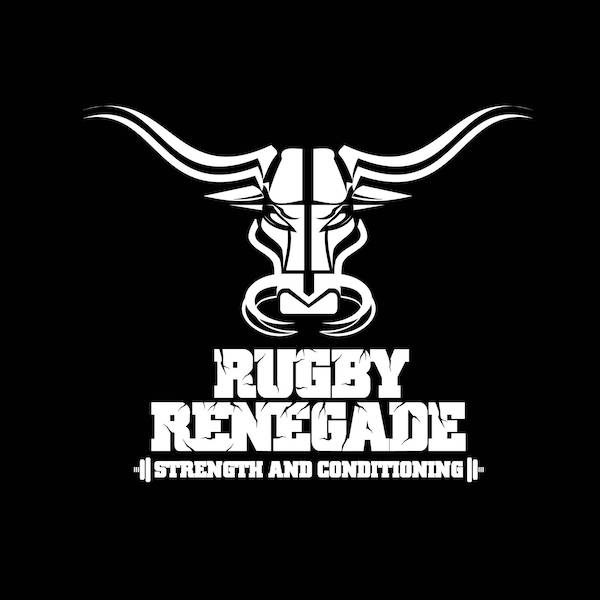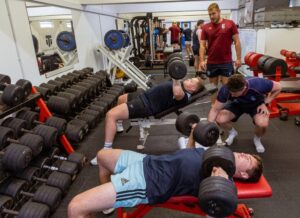Injuries are an unfortunate part of rugby, and while they can be discouraging, they don’t have to be the end of your training journey. In fact, they can be an opportunity for growth and improvement. Here, we’ll explore how injured rugby players can maintain strength, fitness, and even build muscle mass and strength, all while emphasizing the mantra: “Focus on what you can do, not what you can’t.”

**1. Maintaining Overall Fitness: Cardiovascular Conditioning is Key
When an injury puts you on the sidelines, maintaining overall fitness becomes crucial. While you may not be engaging in high-impact activities, focusing on aerobic fitness can be a game-changer. Opt for low-impact exercises like swimming, cycling, or rowing to keep your cardiovascular system active. This not only aids in maintaining fitness but can also expedite recovery by promoting blood flow to the injured area.
**2. Building Muscle Mass with Isolated Exercises
While traditional strength training might be challenging with certain injuries, you can still target specific muscle groups with isolated exercises. If one limb is injured, focus on strengthening the uninjured side while also incorporating exercises that engage the injured limb without causing strain.
For example, if you have a leg injury, seated leg presses or single-leg squats with the unaffected leg can help maintain muscle mass. Likewise, upper body injuries might lead to an increased focus on single-arm exercises or isolation movements.
**3. Adapting Strength Training: Embrace the Power of Adaptability
Injuries may limit your ability to lift heavy or perform certain exercises, but they don’t limit your ability to adapt. Modify your routine by reducing weights, adjusting resistance, or exploring alternative exercises that put less strain on the injured area.
Additionally, consider incorporating stability and balance exercises. Not only do these help prevent further injuries, but they also contribute to overall functional strength — a crucial component in rugby.
**4. Nutrition: The Foundation for Recovery

Maintaining a balanced and nutrient-rich diet is even more critical during injury recovery. Protein intake is particularly crucial for muscle repair and growth. Consult with a nutritionist to adjust your diet based on your altered training regimen and recovery needs.
**5. Focus on Mental Resilience: Training the Mind is as Important as the Body
Injury recovery is not just physical; it’s mental. Use this time to work on mental resilience, focus, and tactical understanding of the game. Engage in visualization exercises, study game strategies, and cultivate the mental fortitude that is often as vital as physical prowess in rugby.
**6. Rehabilitation Exercises: Bridging the Gap to Full Recovery
Injuries often come with rehabilitation exercises prescribed by physiotherapists. These exercises not only aid recovery but can also be integrated into your training routine. Focus on correct form and controlled movements to prevent re-injury and promote overall joint health.
Conclusion: Turning Setbacks into Comebacks
Being injured doesn’t mean you have to put your rugby dreams on hold. It’s a chance to refocus, adapt, and work on aspects of your game you might have overlooked in the daily grind. By maintaining fitness, building muscle, and nurturing mental resilience, you’re not just recovering from an injury — you’re building the foundations for a stronger comeback. Remember, it’s not about what you can’t do; it’s about maximizing what you can, inching closer to full recovery, and emerging from the setback stronger than ever. The rugby field awaits your triumphant return.




